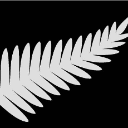- Home
- /
- Programming
- /
- Programming
- /
- Re: digits of the values PROC GMAP
- RSS Feed
- Mark Topic as New
- Mark Topic as Read
- Float this Topic for Current User
- Bookmark
- Subscribe
- Mute
- Printer Friendly Page
- Mark as New
- Bookmark
- Subscribe
- Mute
- RSS Feed
- Permalink
- Report Inappropriate Content
Hello,
I am using gmap procedures to produce maps of the estimates of a model. SAS by default generates the range of these estimates and I can manage the levels but I could be able to manage the digits "decimals" of the estimates. I want to show only 2-digits in the values of the legend.
is there a way to add it to the code?
I appreciate any help.
thank you
here is my code
%macro map(data=,var=);
goptions reset=all;
proc gmap data=&data map=results all ;
id gc;
choro &var / legend=legend1 LEVELS=5;
legend1 position=( bottom right inside ) offset=(1.2cm ,0cm ) shape=bar(2,1) across=1 mode=PROTECT label=none / value=(h=0.8 f=swissb justify=left);
run;
quit;
%mend map;
Accepted Solutions
- Mark as New
- Bookmark
- Subscribe
- Mute
- RSS Feed
- Permalink
- Report Inappropriate Content
I would start by applying a format to the variable that displays the with the desired appearance.
An example where I make an generic data set to actually display something and two versions of a minimal Gmap call to demonstrate the difference a format can make:
proc sql;
create table work.statedata as
select statecode, rand('uniform') as val
from (select distinct statecode from maps.us)
;
quit;
proc gmap data=work.statedata
map=maps.us
;
id statecode;
choro val/levels=5;
run;
quit;
proc gmap data=work.statedata
map=maps.us
;
id statecode;
choro val/levels=5;
format val f4.2;
run;
quit;
I might suggest using a custom format as the above example is likely to generate end points that appear in multiple levels and/or have gaps.
Here's a brief example:
proc format library=work;
value mylev
0 - 0.2 = ' 0 - 0.20'
0.2 <- 0.4 = '0.2 < 0.4'
0.4 <- 0.6 = '0.4 < 0.6'
0.6 <- 0.8 = '0.6 < 0.8'
0.8 <- 1.0 = '0.8 < 1'
;
run;
proc gmap data=work.statedata
map=maps.us
;
id statecode;
choro val/discrete;
format val mylev.;
run;
quit;
Notice use of discrete instead of levels. The above has an additional advantage that you could change the groupings just by either changing the definition of the format or using a different format and not having to adjust the number of levels. This does change to using a discrete color system which would follow pattern definitions instead of a color ramp.
- Mark as New
- Bookmark
- Subscribe
- Mute
- RSS Feed
- Permalink
- Report Inappropriate Content
Needs not totally clear, and an example would be welcome, but have you tried:
- Assigning a format ?
- Rounding the value ?
- Mark as New
- Bookmark
- Subscribe
- Mute
- RSS Feed
- Permalink
- Report Inappropriate Content
Hello @ChrisNZ,
I appreciate your response. I do not know how to round within the code. Is it possible inside the code or should I round the values of the outputs first?
I want to map specific outputs of a regression model e.g., residuals, please find the legend attached. however i want the values to be rounded to only 2-digits (i.e., 0.53-0.67, 0.67-0.73, 0.73-0.80, 0.80-0.88)
Thank you
- Mark as New
- Bookmark
- Subscribe
- Mute
- RSS Feed
- Permalink
- Report Inappropriate Content
I would start by applying a format to the variable that displays the with the desired appearance.
An example where I make an generic data set to actually display something and two versions of a minimal Gmap call to demonstrate the difference a format can make:
proc sql;
create table work.statedata as
select statecode, rand('uniform') as val
from (select distinct statecode from maps.us)
;
quit;
proc gmap data=work.statedata
map=maps.us
;
id statecode;
choro val/levels=5;
run;
quit;
proc gmap data=work.statedata
map=maps.us
;
id statecode;
choro val/levels=5;
format val f4.2;
run;
quit;
I might suggest using a custom format as the above example is likely to generate end points that appear in multiple levels and/or have gaps.
Here's a brief example:
proc format library=work;
value mylev
0 - 0.2 = ' 0 - 0.20'
0.2 <- 0.4 = '0.2 < 0.4'
0.4 <- 0.6 = '0.4 < 0.6'
0.6 <- 0.8 = '0.6 < 0.8'
0.8 <- 1.0 = '0.8 < 1'
;
run;
proc gmap data=work.statedata
map=maps.us
;
id statecode;
choro val/discrete;
format val mylev.;
run;
quit;
Notice use of discrete instead of levels. The above has an additional advantage that you could change the groupings just by either changing the definition of the format or using a different format and not having to adjust the number of levels. This does change to using a discrete color system which would follow pattern definitions instead of a color ramp.
- Mark as New
- Bookmark
- Subscribe
- Mute
- RSS Feed
- Permalink
- Report Inappropriate Content
April 27 – 30 | Gaylord Texan | Grapevine, Texas
Registration is open
Walk in ready to learn. Walk out ready to deliver. This is the data and AI conference you can't afford to miss.
Register now and lock in 2025 pricing—just $495!
Call for Content EXTENDED
Still thinking about your presentation idea? The submission deadline has been extended to Friday, Nov. 14, at 11:59 p.m. ET.
Learn how use the CAT functions in SAS to join values from multiple variables into a single value.
Find more tutorials on the SAS Users YouTube channel.
SAS Training: Just a Click Away
Ready to level-up your skills? Choose your own adventure.




